What is Pashmina? Where does it come from?
Pashmina is the undercoat of goats found in many high-altitude regions worldwide, most commonly in Tibet, Mongolia and India. The climatic conditions in these places are very harsh, and the winters are particularly severe. The goats develop a fine, soft undercoat to survive the harsh winters. This down-like fibre is called pashmina. It is one of the finest materials and is ideal for making shawls and stoles.
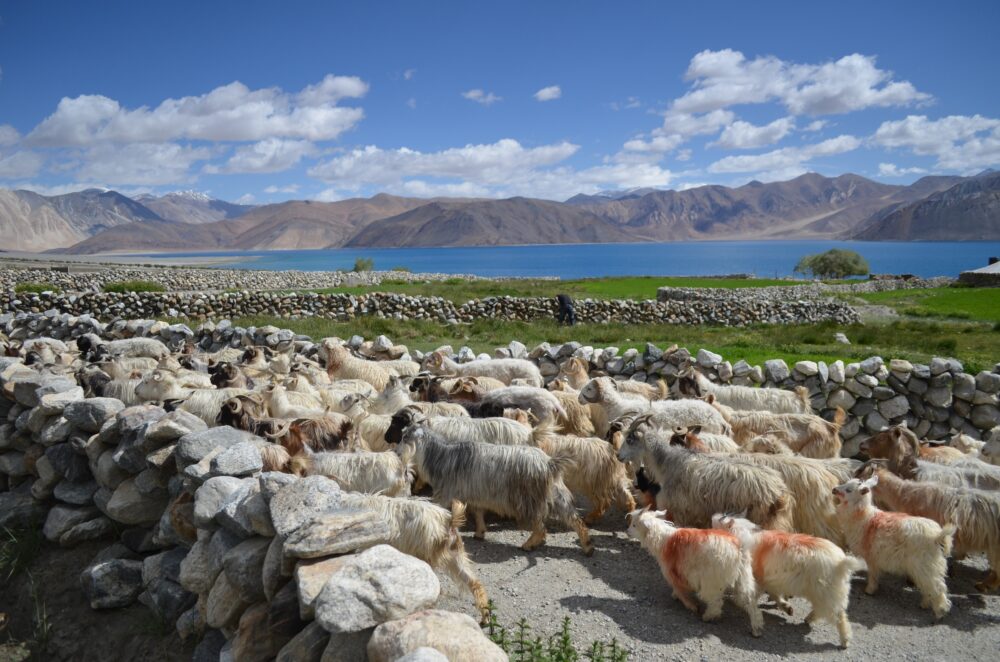
In India, most pashmina comes from the Changthang region of Ladakh, which is a high-altitude cold desert at heights between 4000 and 4500 meters, west of Tibet. The Changthang plateau is inhabited by pastoralist nomads called Changpas. As agriculture is not possible in these harsh conditions, the Changpas depend largely on their animals to provide them with the necessities of life and income. Sheep, pashmina goats, yaks and horses are their most important animals.
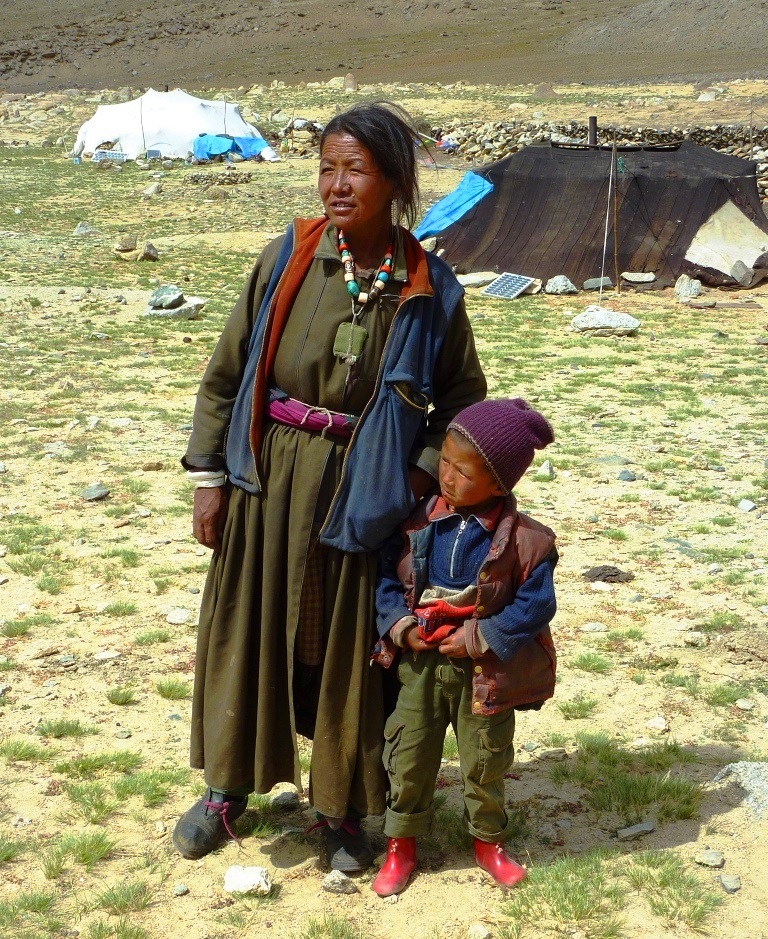
Changpa Nomad-Mother and Son. Source: John Hill, CC BY-SA 4.0, via Wikimedia Commons
The Changpa nomads collect pashmina by combing the goat in summer when a thick coat is not needed. They sell it as raw pashmina (a mixture of fine soft pashmina and the rough hair of the goat) to traders from Leh and also to a cooperative society formed by the Changpas with government support (called the All Changthang Pashmina Growers Marketing Cooperative Society). The traders then take this raw pashmina to Srinagar and other shawl-making centers.
Raw pashmina goes through a number of processes before it is woven. First, the fibre is cleaned and separated from the thick hair by a process called de-hairing. In the past, this was done manually but now most of the dehairing is carried out by machines. Cleaned and carded pashmina is spun into fine yarn. Again, in the past, all spinning was done by hand but today most is spun in mills. The yarn is then dyed and woven into pashmina shawls and other products.
Traditionally, there are two main types of Kashmiri hand-made pashmina shawls: Kani shawls, which are woven by using a twill-tapestry technique, and embroidered pashmina shawls called Amli. The weaving of Kani shawls is a very skill-intensive, slow process, and a design-rich Kani shawl can take as long as one and a half to two years to complete. Embroidered shawls, on the other hand, require less time and skill.
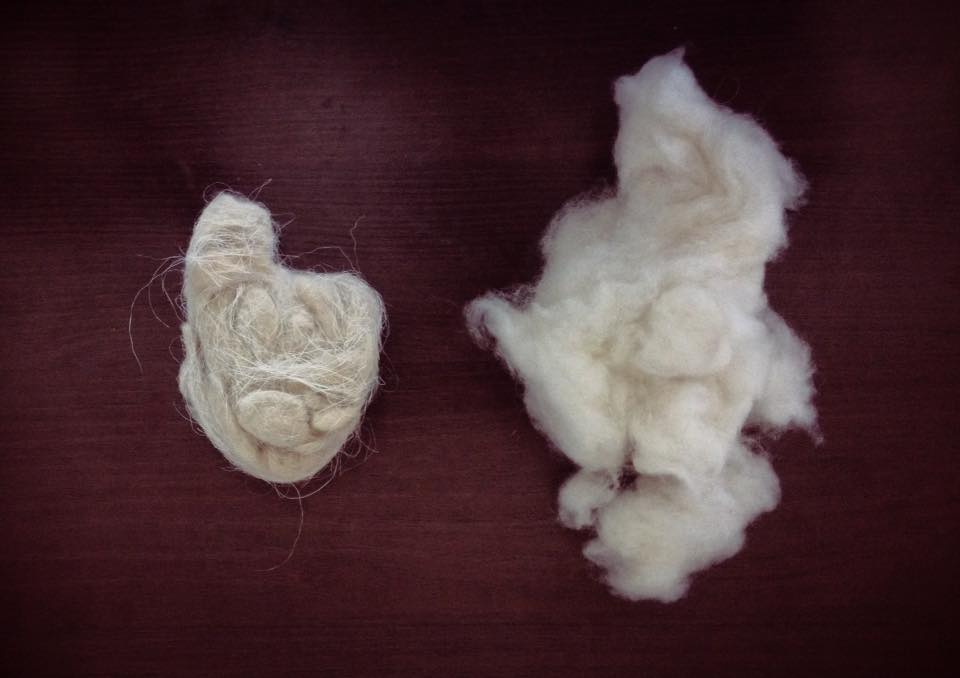
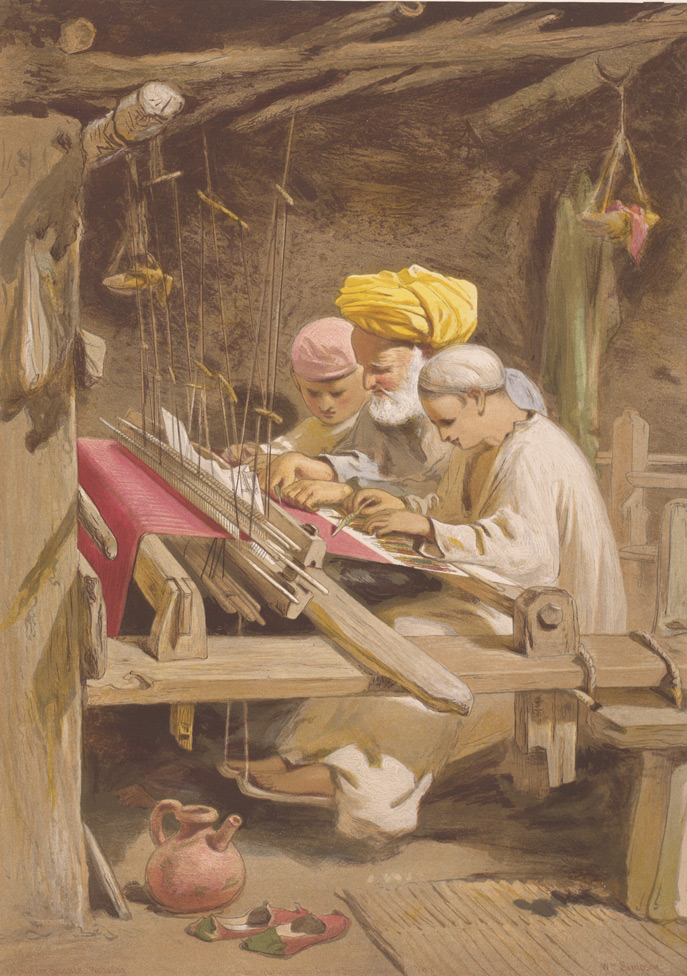
A brief history of the pashmina shawl in Kashmir
The pashmina shawl has been woven in Kashmir for centuries, but its precise origin is not known. Some researchers believe that the craft has a history going back thousands of years, while others consider it to be of a more recent origin. However, it is a generally accepted tradition that shawl weaving received strong support from Sultan Zainul Abdin who reigned in Kashmir between AD 1420-70. The Sultan, who promoted a range of arts and crafts in the valley, is believed to have encouraged skilled craft masters from Iran and Central Asia to move to Kashmir and train local weavers in improved techniques and designs. Other crafts promoted by the Sultan included wood carving and papier-mache.
For many centuries the weaving of the pashmina shawl was centered in and around the village of Kanihama, and because of this strong association, the shawls were called Kani shawls. These shawls were woven on simple looms with the twill tapestry technique. This was very laborious and required a high degree of specialization and skill. The time taken to produce a Kani shawl was long- a design-rich shawl could take as long as two years to complete. Consequently, the cost was high and only the rich (mostly the royalty) could afford to buy them. In fact, the craft depended largely on support from royal courts in India and other parts of Asia. (It is true today also that the weaving of the Kani shawl is a very slow and skill-intensive process and its production cost is high)
The Mughal kings and their courtiers provided much of the demand for pashmina shawls and fabric during the 16th and 17th centuries. Akbar, who conquered Kashmir in 1586, then Jehangir and Shahjehan after him, were great admirers of the shawls, which became very fashionable at court and were also important gifts among the courtiers. Apart from the Indian royalty, there was a large demand for pashmina shawls and fabric from the courts of Iran, Turkey, and Central Asia.
As the demand increased, the number of looms making pashmina shawls in Kashmir increased from about 2000 at the beginning of the Mughal rule (1586) to more than 40,000 during the reign of Aurangzeb (1658-1707). (Sulakhan Singh and Showkat Ahmad Dar, “Shawl Industry in Kashmir Under the Mughals 1586-1752-A Critical Note“, Academic Journals, November 2014.)
The decline of Mughal power in the eighteenth century saw a decrease in the demand for shawls. Although the new centers of power which replaced the Mughal authority in various parts of India, such as the Marathas, continued to patronize the pashmina shawl and fabric, the demand was smaller.
Also, the Afghan rulers (1752-1819), who replaced the Mughals in Kashmir, imposed heavy taxes on the production of and trade in shawls, adding to the industry’s difficulties. They also introduced the institution of dagh Shal, under which a shawl could be sold only after it had been stamped by government officials on payment of a tax. The tax was high, making shawl weaving uneconomical, and the number of weavers and looms declined. George Forester, who visited Kashmir in 1783, recorded only 16,000 shawl looms as against 40,000 under the Mughals. (Forster George “A journey from Bengal to England, through the northern part of India, Kashmire, Afghanistan, and Persia, and into Russia, by the Caspian Sea“, London, 1798)
The situation became worse during the Sikh rule (1820-46) as the taxes were increased first to 25% and then to 40% of the price of a shawl. (William Moorcroft and George Trebeck, “Travels in the Himalayan Provinces of Hindustan and Punjab; in Ladakh and Kashmir; in Peshawar, Kabul, Kunduz, and Bokhara (1819-1826)“, London, John Murray, Albemarle Street, 1841, Vol. II, p. 184 and Vigne, Godfrey Thomas, “Travels in Kashmir, Ladakh and Iskardo, Countries Adjoining Mountain-Course of the Indus and the Himalaya, North of the Punjab“, Vol. II, London: Henry Colburn, 1882, p. 129”. Quoted by Shiraz Ahmad Dar in The Other Side of Terrestrial Paradise: Kashmir and its Shawl Industry (c. 1420-1846))
However, with the emergence of the British Raj as the dominant force in the late 18th and early 19th centuries, pashmina shawl weaving experienced a revival. As new markets opened up in Europe, particularly in Britain and France, the demand for shawls saw a sharp increase.
Pashmina shawls from Kashmir were first introduced into Britain by the East Indian Company’s employees and their visitors returning home from India. These shawls were highly valued gifts carried to Britain. In France, pashmina shawls were introduced by Napoleon and his officers, who purchased them in Egypt during their campaign of 1798-1801. (Michelle Maskiel, “Consuming Kashmir: Shawls and Empires, 1500-2000 “, Journal of World History, Vol. 13, No. 1 (Spring, 2002), University of Hawai’i Press, pp. 27-65 ) By the early 19th century the shawl trade between Kashmir and the West (mostly Britain and France) was well established. As exports increased, French and British importers sent their agents to Kashmir to get shawls produced to designs from the importing markets.
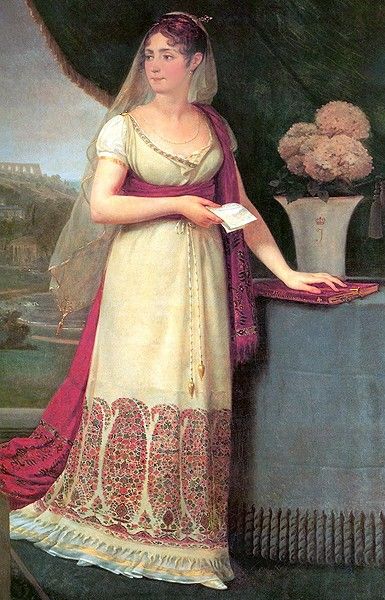
Between 1850 and 1860, shawl exports to Europe rose very fast. This was a golden period for Kashmiri shawls. The export boom, however, did not last long. By 1870, the demand had begun to contract. There were two main reasons for this. The production of cheap imitations in Britain and France had lowered shawl prices, making them an article of mass consumption. As a result, Kashmiri shawls were no longer considered fashionable by the rich. Secondly, after the Franco-Prussian War of 1870-71, the French could not afford to import shawls in large numbers. As about 80% of shawls from Kashmir had been exported to France, the loss of this market had a devastating effect on the industry. Matters were made worse for the weavers by the famine of 1877-79, when thousands of them perished.
Faced with severe poverty, a large number of shawl weavers migrated to towns in Punjab including Amritsar, Lahore, Jalal Pur, Nurpur and Rampur Bushar. There they set up Kashmiri colonies, weaving shawls of Kashmiri designs. But in Kashmir, sadly, shawl weaving almost ceased to exist after the late nineteenth century. Since then, and until the 1990s, most of the shawls being made in Kashmir were embroidered. (Janet Rizvi and Monisha Ahmed, The Kashmir Shawl and Beyond, 2017).
Since the 1990s shawl weaving has seen a sort of revival in Kashmir. The revival is centered in and around the village of Kanihama. Some of the weaving families of this village had preserved the craft of Kani shawl weaving and found a new demand for their shawls. This demand, though limited mostly to the very rich in North India, is considered sufficient to ensure the survival of pashmina shawl weaving in Kashmir.


